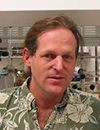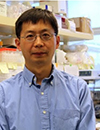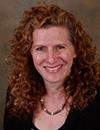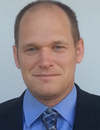Co-Located Conference AgendasLab-on-a-Chip, Microfluidics & Microarrays World Congress | NGS, SCA, Mass Spec: The Road to Diagnostics | Point-of-Care Diagnostics & Global Health World Congress | 

Monday, 28 September 201512:30 | Badge and Conference Materials Pick-Up | |
Converging Technologies: Single Cell Analysis, Microfluidics -- Explored During This Congress |
| | 13:30 | Microfluidic Bioaffinity Assays: Improving Detection and Molecular Profiling of Disease Biomarkers
Yong Zeng, Associate Professor, University of Florida, United States of America
Molecular recognition or bioaffinity interaction is an essential principle underlying a vast array of biotechnologies and applications, such as biosensing and drug delivery. Here we will discuss our studies on exploring microfluidic principles to advance bioaffinity-based assays for quantitative detection and biochemical characterization of circulating cancer biomarkers. More specifically, this presentation will be focused on microfluidic engineering of both immunoassays and lectin array to substantially improve the assay performance. Their applications to detection and glycan profiling of circulating proteins markers and exosomes associated with tumors will be presented to demonstrate the potential use for cancer diagnosis. | 14:00 | Highly-Efficient and Selective Isolation of Circulating Tumor Cells by Using a Wave-herringbone Microfluidic Device
Shunqiang Wang, Research Assistant, Department of Mechanical Engineering & Mechanics, Lehigh University, United States of America
We reported a novel microfluidic device with wave-herringbone structures for isolation of circulating tumor cells. Through a geometry optimization study in our proposed computational model, our device achieved both competitively high capture efficiency and selectivity compared with reported values. | |
Agilent Symposium: Mass Spec and High Resolution Genomic Analyses in Clinical Research | Session Sponsors |
| | 14:30 | Introductions and Agilent Mass Spec Technology Overview
Michael Scott, Clinical Market Development Manager, Agilent Technologies, Inc., United States of America
| 14:45 | High Throughput Monitoring of Small Molecules in Human Plasma
Mohit Jain, Assistant Professor, University Of California San Diego, United States of America
Both internal and external environmental factors are critical modulators of human disease through the introduction of small molecules into circulating plasma. Traditional untargeted LC-MS based approaches for assessing plasma small molecules are analytically time intensive, thereby limiting sample throughput. We will introduce new approaches for high throughput measure of small molecule metabolites in human plasma using automated in-line SPE with direct infusion mass spectrometry. We apply these tools to population scale cohorts and will demonstrate the association of small molecules with human disease. | 15:30 | Driving Precision Genomics with Complementary High-Resolution Technologies
David Weiss, Field Application Scientist, Agilent Technologies Inc, United States of America
| 15:45 | An Integrated Process for Identification, Retrieval, and Single-Cell Genomic Analysis of Circulating Tumor and Fetal Cells
Eric Kaldjian, Chief Medical Officer, RareCyte, United States of America
Genomic analysis of single cells has been enabled by methods allowing amplification of extremely small amounts of nucleic acid. RareCyte has developed AccuCyte® - CyteFinder®, an integrated technology platform for highly sensitive visual identification and retrieval of rare cells in blood. The AccuCyte kit comprehensively collects the nucleated cell fraction of the blood and transfers it to a microscope slide compatible with automated immunostaining and other slide-based tissue tests. CyteFinder is a highly precise digital scanning fluorescence microscope with image analysis system for multi-parameter visual characterization and mechanical isolation of single cells for genomic analysis for research. Investigational genomic analyses for circulating tumor and fetal cells will be presented. | 16:30 | Close of Agilent Symposium |
Tuesday, 29 September 201508:00 | Conference Registration, Coffee, and Breakfast Pastries in the Exhibit Hall. Exhibit Hall Opens. | |
Session Title: Emerging Technologies and Trends in Single Cell Analysis (SCA) |
| | 09:00 |  | Keynote Presentation Single Cell Barcode Chips for Quantitative Proteomics and Metabolomics Assays from Single Cancer Cells
James Heath, Elizabeth W. Gilloon Professor of Chemistry, California Institute of Technology (CalTech), United States of America
I will discuss microchip platforms for integrated and quantitative assays of functional proteins and metabolites from statistical numbers of single cells. I will further describe thermodynamics-derived approaches for using such platforms to understand cellular transitions associated with carcinogenesis. |
| 09:30 |  | Keynote Presentation Single-Cell Sequencing of the Human Brain
Kun Zhang, Professor, Department of Bioengineering, University of California San Diego, United States of America
|
| 10:00 | Integrated Lens-Free Imaging Technologies Enabling High-Throughput Label-Free Single-Cell Analysis
Richard Stahl, Senior Researcher, IMEC VZW, Belgium
Imagine an inexpensive, portable and label-free (blood) cell analyzer that can be used in emergency or resource-limited settings. Our goal is to use the versatility and scalability of semiconductor technologies to develop such a high-throughput single-cell analyzer using miniaturized lens-free microscopes integrated into a self-contained single-chip system. While our previously reported results confirm that such devices can reach sufficient performance, a number of challenges needs to be addressed in the imaging, micro-fluidics as well as photonic sub-systems. Here we give an overview of the system design, report the progress in development and integration of the individual hardware components, and showcase the system demonstrators with integrated photonics and micro-fluidics. We also report the advances on image reconstruction and cell classification algorithms and discuss the latest results from experiments on analyzing and sorting subtypes of white blood cells with our cell-sorting devices. | 10:30 | Coffee Break, View Posters, Visit Exhibitors and Networking | 11:00 | Tracking Development and Aging of Individual Bacteria with Microfluidic Devices
Stephen Jacobson, Professor, Indiana University, United States of America
Analysis of single cells provides powerful insight into biological processes that are often missed when a population of cells is studied as an ensemble. We are developing microfluidic-based approaches coupled with optical microscopy to track individual bacteria and to improve the temporal and spatial resolution of single-cell measurements. To streamline our experiments, we designed and tested a microfluidic “baby machine,” which automates the culture, synchronization, and analysis steps. This microfluidic device is used to produce synchronized populations of cells and monitor adhesion of individual bacteria to surfaces. To study development and aging in bacteria, we integrated nanochannel arrays into the microfluidic platform that physically trap bacteria. With these nanochannel arrays, we are able to study a number of bacteria strains and observe them over multiple generations. Consequently, we are able to determine rates of cell growth and division, monitor accumulation of cellular damage, and observe epigenetic effects.
| 11:30 |  | Keynote Presentation NGS Keynote: Opportunities and Challenges of Implementing Next Generation Sequencing Technologies for Delivery of Genomic Medicine
Nazneen Aziz, Executive Director, Kaiser Permanente Research Bank, United States of America
Many important advances in technologies for molecular analyses have fostered the rapid growth in molecular medicine. The use of these technologies in testing of DNA, RNA, proteins for screening, diagnosing and prognosis of patient’s disease, and also in the development of new biologics and small molecule drugs have given rise to a science that 30 years ago was practically non-existent. Each of these technologies has led to significant advances, but one in particular, can be undoubtedly labeled as ‘disruptive’. Next generation sequencing (NGS), introduced in 2005, has revolutionized the field by increasing the speed at which the genome can be sequenced at a exponentially lower cost. Within 5 years of its introduction and widespread use in research, NGS is transforming molecular medicine. NGS has a higher throughput and lower cost per base and therefore has been rapidly adopted into clinical testing. What is particularly intriguing about NGS’s rapid adoption into clinical testing is that it has a number of intricacies associated with its implementation that is unfamiliar to clinical laboratory. Dr. Aziz will address the opportunities, complexities and challenges of NGS clinical testing. |
| 12:00 | Networking Lunch, Visit Exhibitors and View Posters | 13:00 |  Technology Spotlight: Technology Spotlight:
Single-Cell Analysis: Guiding the Future of Early Detection, Prognosis, and Course of Treatment for Disease
Naveen Ramalingam, Scientist II, Fluidigm Corporation
A number of breakthrough technologies in single-cell analysis are paving the way for increasing the sensitivity & reproducibility of diagnostic tests, while simultaneously reducing the required labor and turnaround time for results. In this session, we will discuss some of these new breakthroughs and their impact on the community.
| |
Session Title: Applications of Single Cell Analysis (SCA) into the Diagnostics Realm |
| | 13:30 | Carbon Nanopipettes (CNPs) for Automated Microinjection and the Study of Sub-cellular tRNA Dynamics
Haim Bau, Professor, University Of Pennsylvania, United States of America
We describe the use of carbon nanopipettes (CNPs) for microinjection into individual cells. The CNP consists of a pulled-quartz micropipette with a thin layer of carbon deposited along its entire interior surface. The tip of the CNP is etched to expose a carbon pipe that varies in diameter from tens to hundreds of nm. The bore of the CNP facilitates microinjection, while the carbon film enables electrical measurements. We utilize the carbon film for impedimetric detection of cytoplasmic and nuclear penetration to trigger injection. We use the CNPs in a custom-developed, automated injection system. As a demonstration of an application, we describe microinjection of fluorescently-labeled tRNA to monitor subcellular tRNA dynamics in real time. | 14:00 |  | Keynote Presentation NanoVelcro-Embedded Microchips for Detection and Characterization of Rare Cells in Blood: Validation Studies in Oncology and OB/GYN Clinics
Hsian-Rong Tseng, Professor, Crump Institute for Molecular Imaging, California NanoSystems Institute, University of California-Los Angeles, United States of America
Our research team at UCLA has demonstrated a highly efficient cell-affinity assay (known as NanoVelcro Microchips) capable of detecting and characterizing rare cells, e.g., circulating tumor cells (CTCs) and circulating fetal cells (CFCs) in blood samples collected from cancer patients and expectant mothers, respectively. In addition to conducting the enumeration of these rare cells, we have been exploring the use of NanoVelcro Microchips for isolating single CTCs and CFCs without contamination by white blood cells (WBCs) in the background. The individually isolated CTCs and CFCs can then be subjected to molecular analyses by FISH, RT-PCR, microarray and/or next-generation sequencing, enabling a wide range of applications in the fields of cancer and prenatal diagnosis. |
| 14:30 |  | Keynote Presentation Extending the Capabilities of Flow Cytometry by Advances in Sensitivity and Resolution
John Nolan, CEO, Cellarcus Biosciences, Inc., United States of America
Driven by the need to understand complex cell systems, high performance instruments and new reagents and assays are pushing the boundaries of the current generation of commercial systems. Multiparameter cell measurement using fluorescent probes can exceed 20 colors, while mass spec-based cytometry (mass cytometry) pushing beyond 50 parameters. Optical detection, which is desired for many applications, including single cell sorting, is being extended by spectral flow cytometry, where high spectral resolution enables the use of new analysis methods, optical probes, and multiplexing approaches. Higher sensitivity instruments and brighter reagents are allowing single particle analysis to extend to the nanoscale, to study complex systems of extracellular vesicles that mediate communication between cells and through the organism. This presentation will focus on these new instruments, reagents and assays, and the biomedical applications they are enabling in cardiovascular disease, cancer, and other areas. |
| 15:00 | Coffee Break, View Posters, Visit Exhibitors and Networking | 15:30 | Single Cell Pipette Assisted Cancer Cell Genome Analysis
Lidong Qin, Professor and CPRIT Scholar, Houston Methodist Research Institute, United States of America
There is increasing evidence that solid tumors are likely comprised of many subpopulations of cells with distinct genotypes and phenotypes, which is a phenomenon termed intratumor heterogeneity. Such heterogeneity becomes a major obstacle to effective cancer treatment and personalized medicine. Because of this inherent heterogeneity, data collected from cancer cell population-averaged assays likely hides valuable but rare events such as dramatic variations in gene expression at the single cell level. Therefore, understanding cellular heterogeneity from cancer biospecimens, especially in the study of phenotype-genotype correlation, will facilitate identification of new cell subsets, and assist in cancer prevention, diagnosis, and therapy. In this proposal, we focus on developing a high throughput approach for single-cell isolation based on cells’ capability in generating protrusions. To be able to retrieve the desired single adherent cell, a Protrusion Analysis Chip (PAC) is proposed, in which the single cell is captured by a single hook and physically isolated by a barrier. The PAC is rapid, operationally simple, highly efficient, and requires low-volume sample introduction. After adhesion and spreading, cell phenotype is identified microscopically and then the desired cell is retrieved for genotype analysis. The proposed technology developments and study plans may potentially strengthen the understanding of the relationship between phenotype and genotype at the single cell level. | 16:00 | Microfluidics for Cell Encapsulation
Richard Gray, Regional Director, Blacktrace, Inc., United Kingdom
Microfluidic methods have recently been used to encapsulate thousands of single cells, allowing massively parallel and rapid processing whilst requiring small samples and relatively simple implementation. Applications recently reported in major journals include high throughput generation of single cell RNA transcriptomes, profiling natively linked T-cell receptors, isolating monoclonal antibodies from blood samples, and directed evolution by library sorting. This presentation will review the devices and systems required and illustrate typical protocols, encouraging wider adoption by scientists.
| 16:30 | Fabrication of Polymer Nanofluidic Lab-on-Chip Devices for DNA Manipulation and Large Scale Sequencing
Jeroen A. van Kan, Professor, Centre for Ion Beam Applications, Physics Department, National University of Singapore, Singapore
A new 3D-nanolithographic technique which can produce smooth 3D-nanostructures, will be presented. This technique is used to produce masters for PDMS replication of nanofluidics LOC devices down to 60 nm. These LOC devices are extensively used for DNA single molecule analysis. Here I will give an update on the progress of the single molecule study, eg compaction studies and large scale sequencing. Finally thermal nano imprint lithography will be evaluated for the fabrication of PMMA nanofluidics LOC devices. | 17:00 | Single Cell Random Access Memory
Benjamin Yellen, Associate Professor, Biomedical Engineering, Mechanical Engineering and Materials Science, Duke University, United States of America
The ability to manipulate small fluid droplets, colloidal particles and single cells with the precision and parallelization of modern-day computer hardware has profound applications for biochemical detection, gene sequencing, chemical synthesis and highly parallel analysis of single cells. Drawing inspiration from general circuit theory and magnetic bubble technology, we have recently demonstrated a class of integrated circuits for executing sequential and parallel, timed operations on an ensemble of single particles and cells. The integrated circuits are constructed from lithographically defined, overlaid patterns of magnetic film and current lines. The magnetic patterns passively control particles similar to electrical conductors, diodes and capacitors. The current lines actively switch particles between different tracks similar to gated electrical transistors. When combined into arrays and driven by a rotating magnetic field clock, these integrated circuits have general multiplexing properties and enable the precise control of magnetizable objects. The presentation will focus on our recent progress on optimizing these integrated circuits to manipulate magnetically labeled CD4+ T cells, including recent data on single cell switches, cell velocities on chip, as well as the ability of non-fouling surface coatings to resist non-specific adhesion between the cells and chip surface.
| 17:30 |  | Keynote Presentation Isolation and Analysis of DNA/RNA Biomarkers from Hematological Cancer, Solid Tumors and TBI Patient Samples
Michael Heller, Professor, Dept Bioengineering, University of California-San Diego, United States of America
Rapid isolation and fluorescent detection of ccf-DNA/RNA biomarkers from CLL, solid tumor and TBI patient samples (20-100ul) is achieved in 10-15 minutes using an AC dielectrophoretic (DEP) microarray device. In the case of chronic lymphocytic leukemia (CLL), both PCR and DNA sequencing analysis for CLL derived ccf-DNA produces analytical results comparable to conventional “gold standard” procedures. Now, in order to determine the origin of ccf-DNA fragments, apoptotic ~180bp or necrotic >180bp, or both, PCR based amplicon size analysis and sequencing is being carried out on ccf-DNA isolated by DEP from CLL and solid tumor (lung, breast, colon) samples. For CLL, 540 bp mutation-containing PCR amplicons are readily produced even from low levels of ccf-DNA isolated by DEP from both blood and plasma samples suggesting a necrotic origin. Identification of the size range of ccf-DNA cancer biomarkers for their apoptotic or necrotic origins may very well have its own diagnostic value. Ultimately, DEP based sample to answer microarray systems will enable liquid biopsy for cancer and other molecular diagnostic point of care (POC) applications.
|
| 18:00 | Cocktail Reception in the Exhibit Hall: Visit the Exhibitors, View Posters and Network with Your Colleagues. Beers, Wines, and Appetizers Served | 20:00 | Close of Day 2 of the Conference |
Wednesday, 30 September 201507:00 | Morning Coffee, Breakfast Pastries, and Networking in the Exhibit Hall | 08:00 |  Technology Spotlight: Technology Spotlight:
Advances in Microscopy-Based Single Cell Isolation
Chris Wetzel, Director of Sales and Marketing, MMI Microscope-based Single Cell Isolation
| |
Session Title: Circulating Tumor Cell (CTC) Analysis -- Single Cell Analysis (SCA) that has Reached the Clinic |
| | 08:30 |  | Keynote Presentation Analysis of Rare Circulating Tumor Cells (CTCs) for the Management of Cancer-related Diseases
Steve Soper, Foundation Distinguished Professor, Director, Center of BioModular Multi-Scale System for Precision Medicine, The University of Kansas, United States of America
Management of many cancer-related diseases is not restricted to diagnosis, but also must include prognosis, patient stratification, determining drug efficacy, and monitoring for disease recurrence. To assist clinicians in managing cancer diseases, the use of rare CTCs are seen as attractive biomarkers due to the minimally invasive nature of securing them (peripheral blood draw) and the wealth of material they contain (genomic DNA, messenger RNA, proteins, etc). We have developed an assay and the associated hardware that can select directly from peripheral blood CTCs of different types to assist in making clinical decisions for cancer patients in all phases of the management pipeline. Fluidic systems have been generated that can select with high efficiency multiple CTC types that provide complementary information, including those that have an epithelial phenotype and those that possess the ability to digest the extracellular matrix. CTCs of both types were enumerated in a variety of cancer diseases including breast, ovarian, colorectal and pancreatic. Molecular profiling of these rare cell types was also carried out such as mutation detection and mRNA expression profiling. The fluidic system could also be programmed using the appropriate selection antibodies to target circulating cells from non-solid tumors, for example acute myeloid leukemia (AML) and multiple myeloma that would obviate the need for bone marrow biopsies. In the case of multiple myeloma, CD138 was used to select circulating multiple myeloma cells and these cells could be analyzed via FISH to search for chromosome 13 deletions. For AML, the selected leukemic cells (selected using combinations of CD117, CD34 and CD33) could be secured from the fluidic system and immunophenotyped using a miniature flow cytometer. The molecular profiling of rare circulating tumor cells will be discussed with the prospects of performing such analyses on early stage disease, where the CTC abundance is significantly lower. |
| 09:00 |  | Keynote Presentation Profiling CTC Heterogeneity in Patients Using Microfluidics
Shana Kelley, Professor, University of Toronto, Canada
The analysis of circulating tumor cells (CTCs) is an important capability that may lead to new approaches for cancer management. CTC capture devices developed to date isolate a bulk population of CTCs and do not differentiate subpopulations that may have varying phenotypes with different levels of clinical relevance. Here, we present a new device for CTC spatial sorting and profiling that sequesters blood-borne tumor cells with different phenotypes into discrete spatial bins. Antibody-functionalized magnetic nanoparticles facilitate CTC sorting, and permit deconvolution of phenotypic subpopulations. Working with patient blood samples, we obtain profiles that elucidate the heterogeneity of CTC populations present in cancer patients. Samples from patients undergoing treatment for prostate, breast, and renal cancers have been analyzed using this approach, and samples collected from xenograft cancer models have also been used for validation of the approach. |
| 09:30 | Rare Cell Characterization
Mark Connelly, Chief Industrial Operations and R&D Officer, U.S., Menarini Silicon Biosystems, Inc., United States of America
Tumors spreading via a patient’s vasculature, is a well-established and simple concept. The biology that drives it however, is complex and dynamic. In order to shift cancer treatment regimens from tumor-reactive to tumor-proactive we must develop increasingly sophisticated tools for analyzing circulating tumor materials, properly dissecting the underlying biological complexity, and intercepting the disease earlier in the transformation process. We will present the use of an emerging microfluidic technology whose negative depletion technology demonstrates the ability to enrich and purify essentially all populations of circulating tumor cells, tumor related cells, as well as harvest plasma for cfDNA and other markers. Molecular and phenotypic analysis on enriched products will illustrate the ability of the platform to be used for research on non-epithelial tumors and to investigate early disease interception. | 10:00 | Coffee Break, View Posters, Visit Exhibitors and Networking | |
Session Title: Next Generation Sequencing on the Road to Diagnostics |
| | 10:30 | Integration of Genomic and Proteomic Approaches through the NantHealth Operating System
Frank Ong, Executive Director, Medical Affairs and Clinical Development, NantHealth, United States of America
NantHealth, a member of the NantWorks ecosystem of companies founded and led by Dr. Patrick Soon-Shiong, is a transformational healthcare company converging biomolecular medicine and bioinformatics with technology services to transcend the traditional barriers of today’s healthcare system through a single integrated clinical platform. NantHealth works to transform clinical delivery with actionable clinical intelligence at the moment of decision, enabling clinical discovery through real-time machine learning systems. The NantHealth Operating System (NantOS) platform empowers physicians, patients, and payers to coordinate best care, monitor outcomes and control cost in real time. This is the first operating system of its kind in healthcare, enabling real time data capture from multiple disparate data sources, and is based on supply chain principles and grid service oriented architecture, integrating the knowledge base with the delivery system and the payment system, enabling 21st century coordinated care at a lower cost, with value-based population health management at a single patient level and at the population at large.
| 11:00 |  | Keynote Presentation Precision Medicine Empowered by Genomics
Mostafa Ronaghi, Senior Vice President And Chief Technology Officer, Illumina Inc, United States of America
Recent advancements in genomic technologies are changing the scientific horizon, dramatically accelerating biomedical research. For wide implementation of these technologies, their accuracy, throughput, cost, and workflow need to be addressed. In the past ten years, the cost of full human genome sequencing has been reduced by 4-5 orders of magnitude, and reduction will continue by another 10-fold in the next few years. In this talk we will discuss the recent progress of Illumina in introducing new genomics tools and their implementation in precision medicine initiative. |
| 11:30 | The Concordance of RNA-seq and Microarray is Dependent on Chemical Treatment and Transcript Abundance
Charles Wang, Director & Professor, Loma Linda University, United States of America
Next-generation sequencing technologies have revolutionized the genomic
research and allow the genome and transcriptome of any organism to be
explored without a priori assumptions and with unprecedented throughput.
However, the concordance of RNA-sequencing (RNA-seq) with microarrays
for genome-wide analysis of differential gene expression has not been
rigorously assessed using a range of chemical treatment conditions. Here
we use a comprehensive study design to generate Illumina RNA-seq and
Affymetrix microarray data from the same liver samples of rats exposed
to varying degrees of perturbation by 27 chemicals representing multiple
modes of action (MOAs). The cross-platform concordance in terms of
differentially expressed genes (DEGs) or enriched pathways is linearly
correlated with treatment effect size (R2˜0.8). Furthermore, the
concordance is also affected by transcript abundance and biological
complexity of the MOA. RNA-seq outperforms microarray (93% versus 75%)
in DEG verification as assessed by quantitative RT-PCR, with the gain
mainly due to its improved accuracy for low-abundance transcripts. | 12:00 |  | Keynote Presentation Next Generation Sequencing in the Clinic: Found the Variants, Now What?
Jennifer Friedman, Clinical Professor of Neurosciences and Pediatrics, Rady Children's Hospital in San Diego, United States of America
Advances in genome sequencing hold tremendous promise for providing answers and tailored therapies for undiagnosed patients. How to interpret, transmit and act upon volumes of complex data remains a challenge for sequencing providers, physicians and their patients. This presentation will use case-based examples to demonstrate promises and pitfalls encounter along the way. |
| 12:30 | Networking Lunch, Visit the Exhibitors, and Poster Viewing | 13:30 |  Technology Spotlight: Technology Spotlight:
Acoustic Liquid Handling for Genomics Applications
Austin Swafford, Field Application Scientist, Labcyte Inc
The Labcyte Echo® liquid handler revolutionizes liquid transfer by using acoustic energy to eject fluids. Echo liquid handlers are contact-free – no tips or nozzles are used as nanoliter-sized droplets of the fluid move directly from source plate to destination plate. Eliminating tips reduces costs, minimizes waste and eliminates carry-over cross contamination. Dispensing sub-microliter volumes further enables assay miniaturization to provide additional cost savings and to conserve precious samples and reagents. The technology behind Echo liquid handlers and the Genomics application areas where the systems are currently in use will be reviewed in the presentation.
| |
Session Title: Mass Spectrometry -- On the Road to Diagnostics |
| | 14:00 | Metabolomics: The Missing Link in Precision Medicine
John Ryals, President And CEO, Metabolon Inc, United States of America
Shaun Lonergan, Vice President/General Manager, Metabolon Inc, United States of America
Metabolon has developed a platform technology capitalizing on advances in mass spectrometry, proprietary software and database analysis to provide unprecedented insight into biochemical pathways. Along with information provided by whole genome or exome sequencing technologies, metabolite data provides ontology for determining genome wide associations. This insight is critical to determining penetrance of a gene determinant of interest and relating it to health status. Because metabolites are more closely linked to actionable information, metabolomics can provide clinicians with more insight to the patient’s health status. With or without genetic information, metabolomics will play a big role in the future of precision medicine. | 14:30 |  | Keynote Presentation Mass Spectrometry-Based Metabolomics as a Unique Biochemical Approach for Understanding Disease Pathogenesis
Gary Siuzdak, Professor and Director, The Scripps Research Institute, United States of America
Metabolomics, the quantitative global analysis of endogenous metabolites
from cells, tissues, fluids and whole organisms, is becoming an
integral part of functional genomics efforts as well as a tool for
understanding fundamental biochemistry. While the genome and proteome
represent upstream biochemical events, metabolites correlate with the
most downstream biochemistry and therefore most closely represent the
phenotype. This has been proven by the broad success of metabolite
analysis in clinical diagnostics. The experimental aim in our studies is
to obtain a comprehensive quantitative view of the metabolome to expand
our understanding of what pathways are altered in specific diseases. We
have developed a novel mass spectrometry platform for metabolomics
including XCMS Online data analysis combined with METLIN, a
comprehensive MS/MS metabolite database. These technologies will be
presented in the context of their application to disease. |
| 15:00 | Coffee Break, Networking, Visit the Exhibitors and Poster Viewing | 15:30 |  | Keynote Presentation Clinical Research with MALDI-TOF Mass Spectrometry for Robust and Highly Sensitive Nucleic Acid Detection and Quantification
Anders Nygren, Senior Director, Research and Development, Agena Biosciences, United States of America
There has been a large increase in demand for high-throughput DNA analysis in the last decade as the linkages between genomic variations disease and disease predisposition have been established. Today, the majority of discovery research including genome wide association studies (GWAS) are performed using DNA microarrays and next generation sequencing (NGS). NGS is excellent for scanning entire genomes, large genomic regions, or when the analytes of interest exist in a relatively narrow concentration range. Once disease linkages have been established, robust and high throughput MALDI-TOF mass spectrometry (MS) can be used when approximately 100 - 200 loci need to be examined with high precision or when the amount of sample is limiting. This strategy can be used to rapidly validate discoveries, and be implemented to analyze genetic aberrations ranging from single nucleotides to insertions and deletions in thousands of clinical research samples cost effectively. An exciting new area for MALDI-TOF MS is its use for non-invasive detection of circulating cell free tumor DNA or the detection of low frequency mutations from partially degraded DNA derived from formalin fixed paraffin embedded tissues. Examples will be shown for a number of clinical approaches including large-scale SNP genotyping for pharmacogenetic analysis, detection of gene fusions as a substitute technology for in-situ hybridization (FISH), and epigenetic variations. Finally a novel approach for non-invasive, ultrasensitive detection of somatic oncogene mutations in plasma will be presented. |
| 16:00 | Bioanalytical Sample Preparation Strategies Prior to LC-MS/MS Analysis of Drugs and Biomarkers
Vincenzo Pucci, Principal Scientist, Preclinical Bioanalytical Group, Merck Research Laboratories, United States of America
An essential component of the drug-discovery process is the
determination of drug and biomarker concentrations in biological samples
which yields the data necessary to understand the pharmacokinetics and
pharmacodynamic, respectively. To obtain these data, each sample of
fluid obtained from an in vitro or in vivo study is subjected to sample
preparation, chromatographic separation, and analytical detection.
Sample preparation is an important and necessary step in the overall
analytical process, because most analytical instruments cannot accept
the sample matrix directly. Despite the tremendous advances in liquid
chromatography mass spectrometry (LC-MS) and LC tandem mass spectrometry
(LC-MS/MS) detection systems in recent times, sample preparation still
represents the most challenging part of the bioanalytical workflow. The
removal of unwanted endogenous matrix components (e.g., protein, salts,
etc.) from the sample must be rapid and as complete as possible to avoid
the introduction of interferences upon analysis. Many different
techniques are available to a drug discovery scientist performing
bioanalytical sample preparation. The focus of this presentation is to
introduce the goals for sample preparation and the many choices
available to the drug-discovery scientist. | 16:30 | Automated, Multiplexed Quantitation of Proteins; Facilitating Mass Spectrometric Assays in Research and in the Clinic
Selena Larkin, Vice President, Marketing and Sales, SISCAPA/Omicia, United States of America
Proteomics workflows often lack the necessary reproducibility required
for clinical applications. This is in part due to the complex nature of
these workflows, which typically start with enzymatic digestion (e.g.
trypsin) of complex specimens (e.g. human blood) followed by multiple
fractionation steps prior to analysis by a mass spectrometer. Therefore,
in order to comply with the clinical specifications for total
analytical error, a simple and reproducible workflow is needed. Here we
report the development of a generic, highly reproducible tryptic
digestion method for complex protein mixtures. This digestion approach
is further complemented with the use of the SISCAPA technology
(sequence-specific capture of target peptides and corresponding stable
isotope labeled standards using high-affinity anti-peptide antibodies
from digested specimens). The result is an ‘addition-only’ or
homogeneous approach that can be easily implemented on a variety of
automated liquid handling platforms for precise, robust and sensitive
measurement of peptide analytes. The addition-only strategy allows for
sequential addition of samples and reagents in a 96-well format and
eliminates the need for separative techniques such as filtration, solid
phase extraction or centrifugation. Furthermore, the SISCAPA enrichment
of analytes creates eluted samples that can be analyzed by mass
spectrometry with minimal liquid chromatography. We have implemented
this workflow on a Bravo Liquid Handling Robot (Agilent Technologies,
CA) for liquid specimens (e.g. whole blood, plasma/serum) and dried
blood spots (DBS). In collaboration with Agilent Technologies, we have
also designed an intuitive user interface that further simplifies the
workflow from an operational perspective. | 17:00 | Close of Day 3 of the Conference |
|


 Add to Calendar ▼2015-09-28 00:00:002015-09-30 00:00:00Europe/LondonNGS, SCA, Mass Spec: The Road to DiagnosticsNGS, SCA, Mass Spec: The Road to Diagnostics in San Diego, California, USASan Diego, California, USASELECTBIOenquiries@selectbiosciences.com
Add to Calendar ▼2015-09-28 00:00:002015-09-30 00:00:00Europe/LondonNGS, SCA, Mass Spec: The Road to DiagnosticsNGS, SCA, Mass Spec: The Road to Diagnostics in San Diego, California, USASan Diego, California, USASELECTBIOenquiries@selectbiosciences.com